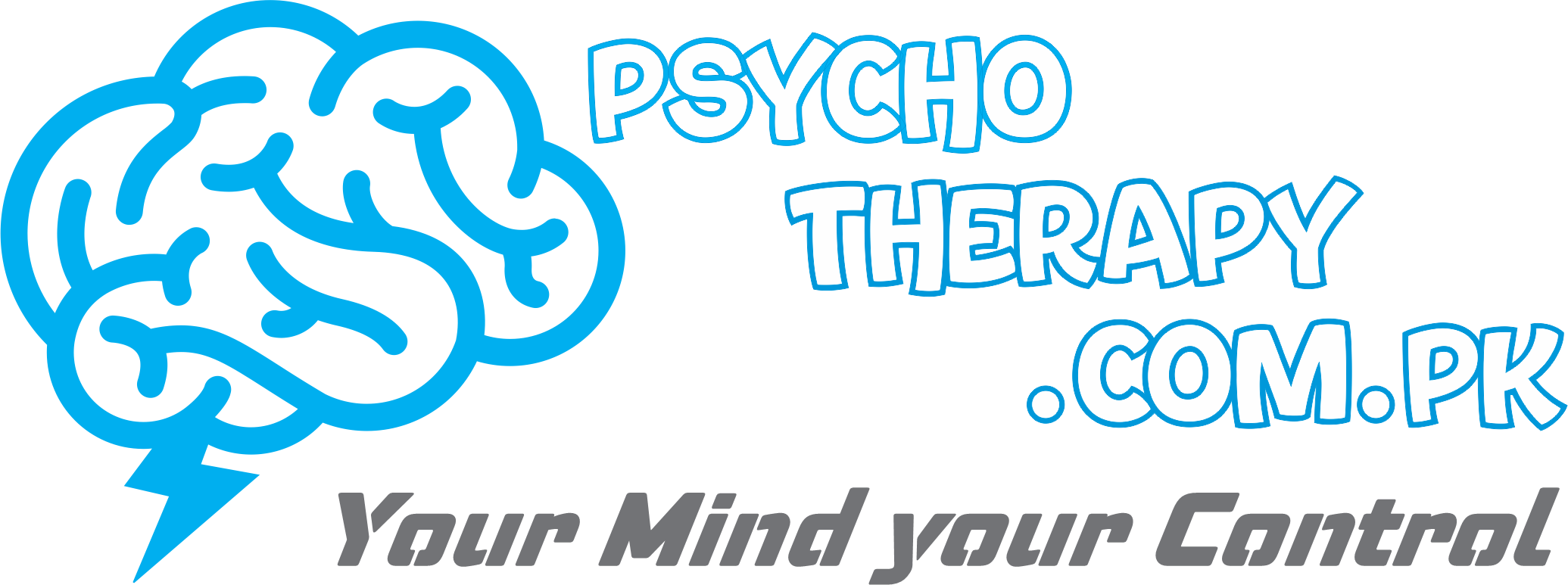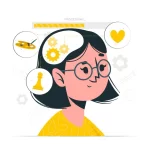
Definition of Family Therapy
Family therapy, also known as family counseling or family systems therapy, is a form of psychotherapy that focuses on improving communication and relationships within a family. It involves working with individuals and their families to address conflicts, enhance understanding, and foster healthier interactions. The primary goal of family therapy is to identify and modify patterns of behavior, communication, and dynamics within the family system to promote positive change and overall well-being.
Family therapy typically involves a trained therapist who facilitates discussions and interventions involving family members. The therapist helps identify underlying issues, dysfunctional patterns, and unresolved conflicts that contribute to family difficulties. Techniques and approaches may vary, but common strategies include communication skills training, problem-solving exercises, role-playing, and exploring family history and dynamics.
This therapeutic approach acknowledges that an individual’s behavior and emotional well-being are influenced by their interactions and relationships within the family unit. By addressing issues within the family context and promoting healthier ways of relating to one another, family therapy aims to improve the overall functioning and harmony of the family system.
Explanation of Family Therapy
Family therapy is a type of counseling or psychotherapy that involves working with individuals and their families to improve their relationships and overall functioning. It’s based on the understanding that problems within a family are often best understood and addressed by looking at the family as a whole, rather than focusing solely on individual members. Here are some key aspects of family therapy:
Holistic Approach: Family therapy takes a holistic approach, considering the family as a system with its own dynamics, communication patterns, and unique interactions. The focus is on understanding how each member’s thoughts, feelings, and behaviors are influenced by the dynamics of the family unit.
Identifying Patterns and Dynamics: Therapists help families identify patterns of interaction and behavior that may contribute to conflicts or issues. This includes exploring communication styles, power dynamics, roles within the family, and how these aspects affect the overall family environment.
Communication Improvement: A significant part of family therapy involves improving communication within the family. This may involve teaching effective communication skills, active listening, and providing a safe space for each family member to express themselves openly and honestly.
Conflict Resolution: Family therapy aims to help families develop healthier ways to manage conflicts and disagreements. Strategies are taught to resolve conflicts constructively, reduce hostility, and promote understanding and compromise.
Family Roles and Boundaries: Therapists work with families to understand and redefine roles and boundaries within the family structure. This includes clarifying responsibilities, expectations, and respecting each member’s autonomy while fostering a sense of togetherness.
Understanding Family History and Influences: Therapists may explore the family’s history, culture, and past experiences to understand how they impact the present dynamics. This historical understanding can shed light on ingrained patterns and help in finding solutions.
Promoting Support and Strengths: Family therapy encourages family members to support one another, recognize each other’s strengths, and collaborate as a team to overcome challenges. It emphasizes the family’s collective ability to adapt and grow.
Involvement of All Family Members: In family therapy, all members of the family are usually involved, including children, parents, siblings, and sometimes extended family members. The involvement of each family member is essential to address the complex interplay of relationships.
Family therapy can be helpful in addressing a wide range of concerns, including relationship conflicts, behavioral issues in children or adolescents, substance abuse, mental health disorders, major life transitions, grief, and more. The ultimate goal is to foster a healthier and more functional family dynamic that promotes the well-being of all its members.
History of Family Therapy
Family therapy has evolved over time and is influenced by various theoretical frameworks and historical developments. Here’s a brief overview of its history:
Early Influences (Early 20th Century):
The foundations of family therapy can be traced back to early 20th-century psychoanalytic ideas and concepts. Pioneers like Sigmund Freud and Alfred Adler explored how family dynamics and early childhood experiences influenced an individual’s psychological well-being.
Marriage Counseling (1930s-1940s):
During the 1930s and 1940s, marriage counseling emerged as a practice to address issues within couples. Psychologist Paul Popenoe and family sociologist Emily Hartshorne pioneered this early form of counseling, focusing on improving marital relationships.
The Birth of Family Therapy (1950s-1960s):
Family therapy as a distinct discipline emerged in the 1950s and 1960s. Psychiatrist J.L. Moreno introduced group psychotherapy, which laid the groundwork for understanding group dynamics within families. The work of researchers like Gregory Bateson, Don D. Jackson, Jay Haley, and Salvador Minuchin contributed to the development of systemic family therapy.
Structural Family Therapy (1960s-1970s):
Salvador Minuchin, a psychiatrist, and his colleagues developed structural family therapy during the 1960s and 1970s. This approach focused on restructuring the family system, identifying roles and boundaries, and addressing power dynamics within the family.
Strategic Family Therapy (1960s-1970s):
Strategic family therapy, influenced by the work of Jay Haley and others, focused on finding solutions to specific problems within a family. Therapists would prescribe directives to bring about change and resolve issues effectively.
Bowenian Family Therapy (1960s-1970s):
Psychiatrist Murray Bowen developed a family therapy approach that emphasized differentiation of self and reducing emotional reactivity within families. It aimed to help individuals become more autonomous while maintaining healthy family connections.
Narrative Family Therapy (1980s):
Developed in the 1980s by Michael White and David Epston, narrative therapy focused on the stories that families construct about their lives and problems. It encouraged reframing narratives to promote change and empowerment.
Postmodern and Integrative Approaches (1990s-Present):
In recent decades, family therapy has continued to evolve with postmodern approaches that emphasize cultural contexts, social constructionism, and collaboration between therapist and clients. Integrative approaches draw from various theoretical frameworks to tailor interventions based on the specific needs of each family.
Current Trends (2020s):
Family therapy continues to evolve, embracing online platforms for therapy, incorporating advancements in neuroscience, trauma-informed approaches, and addressing contemporary challenges such as digital communication impact on family dynamics and mental health.
Family therapy has become an essential and widely practiced form of psychotherapy, helping families navigate challenges, improve communication, and foster healthier relationships. It is constantly adapting to new research, societal changes, and the evolving needs of families.
Types of Family Therapy
Family therapy encompasses several approaches and models, each with its own unique techniques, theories, and goals. Therapists often choose an approach based on the specific needs and dynamics of the family they are working with. Here are some of the main types of family therapy:
Structural Family Therapy (SFT):
- Focuses on restructuring the family system by clarifying and adjusting family roles, boundaries, and hierarchies.
- Techniques include joining, boundary setting, reframing, and enactments to observe and intervene in family interactions.
Strategic Family Therapy:
- Emphasizes problem-solving and finding specific strategies to address identified issues within the family.
- Techniques involve giving directives, creating paradoxes, prescribing the symptom, and using other strategic interventions to provoke change.
Bowenian Family Therapy (Bowen Family Systems Theory):
- Focuses on differentiation of self, where individuals learn to balance emotional autonomy while maintaining emotional connections with their family.
- Techniques include genograms, coaching in managing anxiety, and working on emotional cutoffs.
Narrative Family Therapy:
- Focuses on understanding and reshaping the stories families tell about their lives, problems, and relationships.
- Techniques involve externalizing problems, re-authoring narratives, and encouraging alternative perspectives to create new meanings.
Experiential Family Therapy:
- Emphasizes the expression of emotions and experiences within the therapeutic setting to promote healing and growth.
- Techniques include emotional reenactments, sculpting, and psychodrama to encourage emotional expression and authenticity.
Systemic Family Therapy:
- Examines the family as a dynamic and interconnected system, considering how changes in one part of the system affect the whole family.
- Techniques aim to identify and alter patterns of interaction, communication, and behavior within the family system.
Solution-Focused Brief Therapy (SFBT):
- Focuses on identifying and amplifying solutions and strengths within the family, rather than dwelling on problems.
- Techniques involve scaling questions, miracle question, exception-finding, and goal-setting to facilitate change and progress.
Couples and Family Therapy (Integrative Model):
- Integrates techniques and principles from various therapeutic approaches, tailored to the unique needs of the family or couple.
- Focuses on addressing relationship dynamics, improving communication, and resolving conflicts.
Cognitive-Behavioral Family Therapy (CBFT):
- Incorporates cognitive-behavioral techniques to identify and change negative thought patterns and behaviors within the family.
- Techniques include behavior modification, communication training, and cognitive restructuring.
Multigenerational Family Therapy:
- Explores patterns, behaviors, and relationships across multiple generations within a family, often focusing on intergenerational transmission of behaviors and beliefs.
- Techniques involve genograms, exploring family history, and understanding the impact of past generations on the present.
Each type of family therapy has its strengths and is effective in particular situations. The choice of approach depends on the therapist’s assessment of the family’s needs, goals, and circumstances. Therapists may also use a combination of these approaches to tailor the therapy to the unique needs of the family.
Strategies of Family Therapy
Family therapy employs various strategies and techniques to help families improve their communication, relationships, and overall functioning. These strategies are designed to address specific issues within the family and promote positive changes. Here are some common strategies used in family therapy:
Assessment and Diagnosis:
- Conduct a thorough assessment to understand the family’s dynamics, history, communication patterns, and concerns.
- Diagnose specific issues, conflicts, or mental health challenges that need to be addressed in therapy.
Engagement and Joining:
- Establish rapport and build a trusting therapeutic relationship with each family member to encourage their active participation.
- Join the family system to understand its structure, dynamics, and communication styles.
Communication Skills Training:
- Teach effective communication skills, active listening, and assertiveness to improve interactions and understanding among family members.
- Address unhealthy communication patterns, such as blaming, criticizing, or stonewalling, and encourage healthier alternatives.
Psychoeducation:
- Educate family members about the nature of the issues they are facing, mental health conditions, or any behavioral problems to increase understanding and reduce stigma.
- understanding about mental health and importance of psychotherapy.
- Provide information about coping strategies, problem-solving techniques, and available resources.
Conflict Resolution:
- Facilitate sessions to address conflicts within the family constructively and help family members find resolutions that meet everyone’s needs.
- Encourage active problem-solving, negotiation, compromise, and forgiveness.
Reframing and Restructuring:
- Challenge negative perspectives and reframing issues to encourage more positive and constructive interpretations of situations.
- Restructure family roles, hierarchies, and boundaries to create a healthier family system.
Genogram and Family History:
- Use genograms (family trees) to visually represent family history, relationships, and patterns of behavior across generations.
- Analyze the genogram to identify recurring themes and dynamics that influence the family’s present circumstances.
Role-playing and Enactments:
- Utilize role-playing exercises to help family members express themselves and understand each other’s perspectives.
- Use enactments to recreate specific family interactions, observe behavior, and identify areas for improvement.
Scultping and Structural Interventions:
- Use sculpting to physically position family members to represent their relationships, roles, and dynamics within the family.
- Implement structural interventions to observe and address family structure, boundaries, and power dynamics.
Homework Assignments:
- Assign tasks or activities for family members to practice outside of therapy sessions to reinforce learning and behavior change.
- Homework may involve communication exercises, problem-solving tasks, or activities that strengthen family bonds.
Narrative Techniques:
- Utilize narrative therapy techniques to help family members rewrite their narratives and reshape problem stories into more empowering and hopeful narratives.
- Encourage family members to externalize problems and create a new, preferred narrative.
Goal Setting and Tracking Progress:
- Collaboratively set achievable goals for the family and individual members to work towards throughout the therapy process.
- Regularly revisit and track progress toward these goals to celebrate successes and make necessary adjustments.
Cultural Sensitivity and Inclusivity:
- Acknowledge and respect the family’s cultural, ethnic, and religious background, integrating cultural competence into the therapy process.
- Consider the influence of culture on family dynamics and tailor interventions accordingly.
These strategies are adapted based on the specific needs and circumstances of each family, making family therapy a flexible and dynamic approach to supporting families in achieving positive change and growth.
Utilizations of Family Therapy
Family therapy serves various important purposes and can be beneficial in addressing a wide range of concerns within a family context. Here are some common uses and applications of family therapy:
Improving Communication:
Enhances communication skills and patterns within the family, promoting open and constructive dialogues.
Resolving Conflicts:
Helps in resolving conflicts, disagreements, and disputes within the family in a healthy and constructive manner.
Addressing Behavioral Issues:
Targets behavioral problems in children, adolescents, or family members and develops strategies for behavior modification and management.
Strengthening Family Bonds:
Promotes understanding, trust, and cohesion among family members, fostering stronger and healthier family relationships.
Managing Life Transitions:
Assists families in navigating major life transitions such as divorce, remarriage, relocation, loss of a family member, or the birth of a new child.
Dealing with Substance Abuse/Addiction:
Supports families dealing with substance abuse or addiction issues by providing education, coping mechanisms, and relapse prevention strategies.
Improving Mental Health:
Addresses mental health challenges within the family, such as depression, anxiety, bipolar disorder, or other psychiatric conditions, through therapeutic interventions.
Coping with Illness or Disability:
Assists families in adapting to and coping with the challenges posed by chronic illness, disability, or terminal conditions affecting a family member.
Enhancing Parenting Skills:
Helps parents develop effective parenting strategies, establish consistent discipline, and improve relationships with their children.
Addressing Trauma and Abuse:
Provides a safe space for family members to process and heal from trauma, abuse, or adverse experiences that impact the family dynamic.
Dealing with Eating Disorders:
Supports families in understanding and addressing eating disorders like anorexia, bulimia, or binge-eating disorder, involving multiple family members in the recovery process.
Promoting Blended Family Harmony:
Assists in integrating stepfamilies and addressing the unique challenges associated with blended families, such as adjusting to new family roles and relationships.
Preventing Future Problems:
Focuses on identifying potential problems early and implementing preventive strategies to mitigate future challenges within the family.
Enhancing Coping Skills:
Equips family members with effective coping skills to deal with stress, trauma, grief, or other life challenges as a cohesive unit.
Addressing Academic or School Issues:
Assists families in dealing with school-related problems, academic pressures, behavioral issues in school, or challenges related to special education.
Fostering Resilience:
Encourages resilience and adaptability within the family, enabling them to face and overcome difficulties together.
Family therapy is a versatile and valuable tool in promoting mental and emotional well-being, improving family dynamics, and fostering a supportive and nurturing environment for all family members. It can be beneficial in a wide array of situations, offering guidance and assistance to families as they navigate the complexities of life and relationships.
Advantages of Family Therapy
Family therapy offers numerous advantages and benefits for individuals and families dealing with a variety of challenges. Here are some key advantages of family therapy:
Holistic Approach: Family therapy views individuals in the context of their family and social systems. It considers the interconnectedness of family members, their relationships, and how these factors influence behavior and well-being.
Improved Communication Skills: Family therapy helps family members learn and practice effective communication skills, enhancing their ability to express thoughts, feelings, and needs in a clear and respectful manner.
Conflict Resolution: It provides a structured environment for resolving conflicts and disagreements within the family, fostering healthy ways to address and work through differences.
Enhanced Relationships and Connections: By addressing issues and improving communication, family therapy strengthens the bonds and connections between family members, promoting a sense of togetherness and support.
Empowerment and Ownership: Family therapy empowers family members by involving them in the therapeutic process and decision-making, encouraging active participation and taking ownership of their roles and responsibilities.
Support for Individual Family Members: It allows for the exploration of individual needs, concerns, and experiences within the family context, providing a platform to address personal challenges and develop coping strategies.
Resilience Building: Family therapy helps families develop resilience and adaptability in the face of adversity, enabling them to bounce back from challenges and build a stronger foundation for the future.
Behavioral Changes: It facilitates positive behavioral changes within the family, encouraging healthier habits, interactions, and problem-solving skills to improve the overall family dynamic.
Prevention of Future Problems: By addressing underlying issues and teaching effective coping mechanisms, family therapy can prevent future problems and crises by providing families with the tools to navigate challenges.
Understanding Family Dynamics: It helps family members understand the roles, patterns, and dynamics within the family, leading to a deeper comprehension of each other’s perspectives and behaviors.
Reduced Relapse Rates: For issues such as addiction or mental health disorders, involving the family in therapy can reduce relapse rates and improve treatment outcomes by creating a supportive and accountable environment.
Crisis Management: Family therapy equips families with skills to manage and navigate crises more effectively, promoting a sense of stability and cohesiveness during difficult times.
Enhanced Parenting Skills: It assists parents in developing effective parenting strategies and understanding their children’s needs, leading to improved relationships and a positive family environment.
Cultural Sensitivity: Family therapy can be tailored to be culturally sensitive, recognizing and respecting the unique cultural values and beliefs of the family, enhancing the therapeutic process.
Long-Term Benefits for Children: Research suggests that family therapy can have long-term positive effects on children’s mental health, academic performance, and overall well-being.
Overall, family therapy provides a structured and supportive environment that can lead to meaningful and lasting positive changes within families, enhancing their overall quality of life and relationships.
Effectiveness of Family Therapy
Family therapy has been found to be effective in addressing a wide range of psychological, emotional, and relational issues. Numerous studies and research have demonstrated its effectiveness in improving family dynamics, resolving conflicts, and enhancing individual and collective well-being. Here are some key points regarding the effectiveness of family therapy:
Positive Outcomes for a Variety of Issues:
Family therapy has been effective in treating diverse issues, including substance abuse, eating disorders, depression, anxiety, behavioral problems in children and adolescents, marital conflicts, communication difficulties, and more.
Sustained Improvement:
Research indicates that the benefits of family therapy often endure over time, leading to sustained improvements in family relationships, functioning, and overall mental health.
Reduced Relapse Rates:
For issues like addiction, involving family therapy can significantly reduce relapse rates and contribute to better treatment outcomes compared to individual therapy alone.
Improved Communication and Relationships:
Family therapy helps enhance communication skills and promotes healthier relationships by addressing patterns of interaction, improving understanding, and fostering empathy and support among family members.
Enhanced Parenting Skills:
Parents often report improved parenting skills, increased confidence, and better understanding of their children’s needs and behaviors after participating in family therapy.
Effective in Adolescents and Children:
Family therapy has demonstrated effectiveness in addressing behavioral problems, school-related issues, substance abuse, and mental health concerns in children and adolescents.
Decreased Hospitalization Rates:
Family therapy has been linked to reduced rates of hospitalization for individuals with mental health disorders, indicating its role in preventing and managing crises effectively within a supportive family context.
Empowerment and Resilience:
Family therapy empowers individuals and families, promoting resilience and the ability to cope with challenges, changes, and crises in a more adaptive and healthy manner.
Cost-Effectiveness:
In many cases, family therapy has been shown to be cost-effective, especially when considering its potential to reduce the need for more intensive or prolonged treatments.
Customization and Flexibility:
Family therapy offers a flexible and adaptable approach, allowing therapists to tailor interventions to the unique needs, dynamics, and cultural backgrounds of each family.
Long-Term Impact on Children:
Children who receive family therapy often exhibit better academic performance, improved social relationships, and reduced behavioral problems in the long term.
Collaborative Approach:
The collaborative nature of family therapy, involving multiple family members, allows for a comprehensive understanding of the issues and encourages collective problem-solving and decision-making.
It’s important to note that the effectiveness of family therapy can vary based on factors such as the specific issue being addressed, the commitment and engagement of family members, the skill and expertise of the therapist, and the overall willingness of the family to participate and make changes. Successful outcomes often result from a combination of various therapeutic approaches, family commitment, and ongoing support.
Considerations of Family Therapy
When engaging in family therapy, there are several important considerations that therapists and families should keep in mind to ensure the effectiveness and success of the therapeutic process. These considerations are essential for creating a safe, respectful, and productive environment for addressing family issues. Here are key considerations in family therapy:
Confidentiality and Privacy:
Discuss the limits of confidentiality with the family, outlining circumstances where information may need to be shared outside the therapy setting (e.g., safety concerns, legal requirements).
Informed Consent:
Ensure that all family members understand the purpose, goals, and potential benefits and risks of family therapy, and that they provide informed consent for participation.
Cultural Sensitivity and Awareness:
Respect and integrate the family’s cultural beliefs, values, traditions, and practices into the therapy process, fostering a culturally sensitive and inclusive approach.
Non-Blaming and Non-Shaming Approach:
Foster a non-blaming and non-judgmental atmosphere in which family members feel safe to express their thoughts, feelings, and concerns without fear of criticism or shame.
Collaborative and Empowerment Focus:
Collaboratively involve family members in decision-making and goal-setting, empowering them to take an active role in their own healing and change process.
Respecting Autonomy and Choice:
Recognize and respect each family member’s autonomy, personal boundaries, and right to make their own decisions regarding their participation in therapy and the direction of their lives.
Strengths-Based Approach:
Highlight and build on the family’s strengths, capabilities, and resilience rather than focusing solely on problems, helping to promote a positive and hopeful outlook.
Feedback and Communication:
Encourage open and honest feedback from all family members to assess the effectiveness of the therapy and make necessary adjustments to the therapeutic approach.
Flexibility and Adaptability:
Be flexible in adjusting therapy techniques and strategies to suit the family’s unique needs, circumstances, and dynamics.
Clear Goals and Expectations:
Establish clear therapy goals, expectations, and roles for each family member, ensuring everyone understands their responsibilities within the therapeutic process.
Conflict Resolution Strategies:
Equip family members with effective conflict resolution skills and techniques to address disagreements and conflicts respectfully and constructively.
Psychoeducation and Skill Building:
Provide psychoeducation to family members about their specific concerns and teach them skills to manage their challenges more effectively outside of therapy.
Addressing Power Imbalances:
Be mindful of power imbalances within the family, working to create an egalitarian space where each member’s voice is valued and heard.
Transparency and Honesty:
Maintain transparency in the therapy process, explaining the therapist’s role, the purpose of various interventions, and the expected outcomes.
Ethical Practice and Professionalism:
Adhere to ethical guidelines and maintain professionalism throughout the therapeutic relationship, ensuring the well-being and best interests of the family.
By carefully considering these factors, therapists can establish a foundation of trust and collaboration, leading to a more effective and beneficial family therapy experience for all involved.
Process of Family Therapy
The process of family therapy typically involves a series of stages or steps that guide the therapeutic journey. The goal is to address concerns, improve communication, foster healthy relationships, and achieve positive change within the family system. Here is a general outline of the typical process of family therapy:
Initial Contact and Assessment:
The process begins with the family making contact with a therapist or a therapy center. The therapist conducts an initial assessment to understand the family’s concerns, dynamics, history, and goals for therapy.
Establishing Rapport and Building Trust:
The therapist focuses on building a trusting and non-judgmental relationship with each family member, creating a safe space for open communication.
Clarifying Roles and Expectations:
The therapist explains the therapy process, roles of each family member, and sets clear expectations for participation and confidentiality.
Collecting Family History and Information:
The therapist gathers comprehensive information about the family’s history, relationships, communication patterns, and any significant events or dynamics that may contribute to current issues.
Defining the Problem and Setting Goals:
Together with the family, the therapist helps define the specific concerns, issues, or challenges the family wants to address. Clear and achievable therapy goals are set based on the identified problems.
Interventions and Techniques:
The therapist uses various interventions and techniques based on the family therapy approach being employed (e.g., structural, strategic, narrative). Techniques may include role-playing, communication exercises, genogram creation, reframing, and enactment.
Observing and Analyzing Family Interactions:
During sessions, the therapist observes family interactions, communication patterns, and power dynamics to identify underlying issues and areas for improvement.
Facilitating Communication and Expression:
The therapist promotes open and honest communication among family members, helping them express their thoughts, feelings, and concerns constructively.
Addressing Conflict and Problem-Solving:
The therapist facilitates discussions to address conflicts, disagreements, and unresolved issues within the family, guiding the process of conflict resolution and problem-solving.
Promoting Understanding and Empathy:
The therapist encourages family members to understand each other’s perspectives, experiences, and emotions, fostering empathy and compassion within the family.
Enhancing Coping Strategies:
Family members are taught coping skills and strategies to manage stress, emotional challenges, and crises effectively.
Fostering Change and Integration:
The therapist guides the family in implementing changes based on the therapy goals, ensuring integration of new patterns and behaviors into daily family life.
Assessing Progress and Revising Goals:
Periodically, the therapist evaluates the family’s progress toward the goals set, makes adjustments to goals if necessary, and discusses the next steps in the therapeutic process.
Termination and Follow-Up:
When goals are achieved, or the family decides to end therapy, the therapist facilitates a termination process, summarizing progress and discussing plans for the future. Follow-up sessions may be scheduled to ensure that the family continues to maintain progress and address any residual concerns.
The process of family therapy is dynamic and responsive, adapting to the unique needs and circumstances of each family. It aims to promote a healthier family dynamic and improve overall well-being by nurturing constructive relationships and communication.
What to expect with Family Therapy?
When entering family therapy, it’s important to have a clear understanding of what to expect in order to make the most of the therapeutic process. Here’s a guide on what you can anticipate when engaging in family therapy:
Initial Assessment and Engagement:
- The therapist will conduct an initial assessment to understand the family’s concerns, dynamics, history, and goals for therapy.
- You’ll have the opportunity to ask questions, share your thoughts, and express your concerns about the issues you’re facing as a family.
Establishing Trust and Confidentiality:
- The therapist will emphasize the importance of confidentiality and provide information about the limits of confidentiality to ensure a safe and trusting environment.
- Building a trusting relationship with the therapist is crucial for effective therapy, and you can expect the therapist to prioritize creating a non-judgmental and supportive atmosphere.
Defining Goals and Problem Areas:
- Together with the therapist, you’ll define the specific issues, conflicts, or challenges you want to address during therapy.
- The therapist will help set achievable therapy goals based on the identified problem areas.
Exploring Family Dynamics and Relationships:
- The therapist will guide discussions to explore family dynamics, relationships, communication patterns, roles, and other factors that contribute to the issues at hand.
- Family members will have the opportunity to express their thoughts and feelings regarding their relationships and experiences within the family.
Participation and Involvement:
- Family therapy involves active participation from all family members. Each member is encouraged to share their perspective, thoughts, and concerns.
- You’ll be expected to engage in therapeutic exercises, discussions, and activities designed to address the family’s unique challenges.
Improving Communication:
- Communication skills will be a major focus, and you can expect to learn and practice effective communication techniques to improve interactions within the family.
- The therapist will guide conversations, ensuring that everyone has an opportunity to speak and be heard.
Conflict Resolution and Problem-Solving:
- Family therapy will involve addressing conflicts, disagreements, and unresolved issues within the family.
- You’ll learn and implement conflict resolution strategies and problem-solving techniques to manage conflicts constructively.
Understanding and Empathy Building:
- The therapist will facilitate understanding among family members, helping each person understand the perspectives, experiences, and feelings of others.
- Activities promoting empathy and compassion may be integrated into the therapeutic process.
Homework and Skill-Building:
- You may be assigned homework or tasks to practice the skills learned in therapy and apply them to real-life situations within the family.
- These assignments encourage the integration of new behaviors and strategies into daily family interactions.
Monitoring Progress and Adjusting Goals:
- The therapist will regularly assess your progress towards the therapy goals, adjusting goals if necessary to ensure meaningful and achievable outcomes.
- Communication about progress and the effectiveness of the therapy is an ongoing part of the process.
A Supportive Therapeutic Relationship:
- You can expect a supportive therapeutic relationship with the therapist, who will guide, facilitate, and provide guidance throughout the therapy journey.
Overall, expect family therapy to be a collaborative and constructive process that aims to strengthen relationships, improve communication, and address the concerns that brought your family to therapy in the first place. It’s an opportunity for growth, healing, and positive change within the family system.










